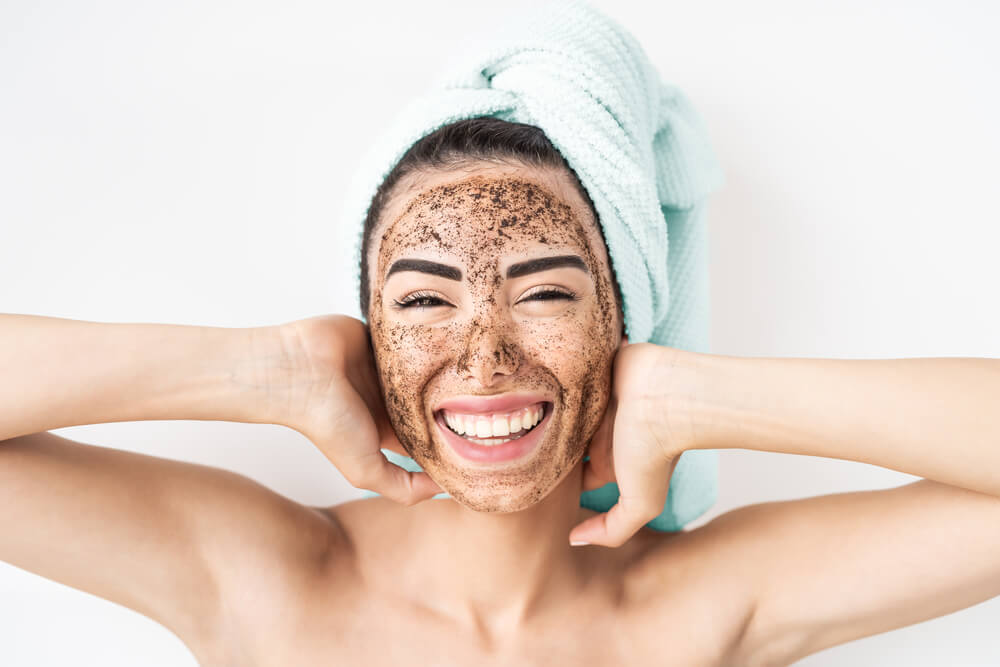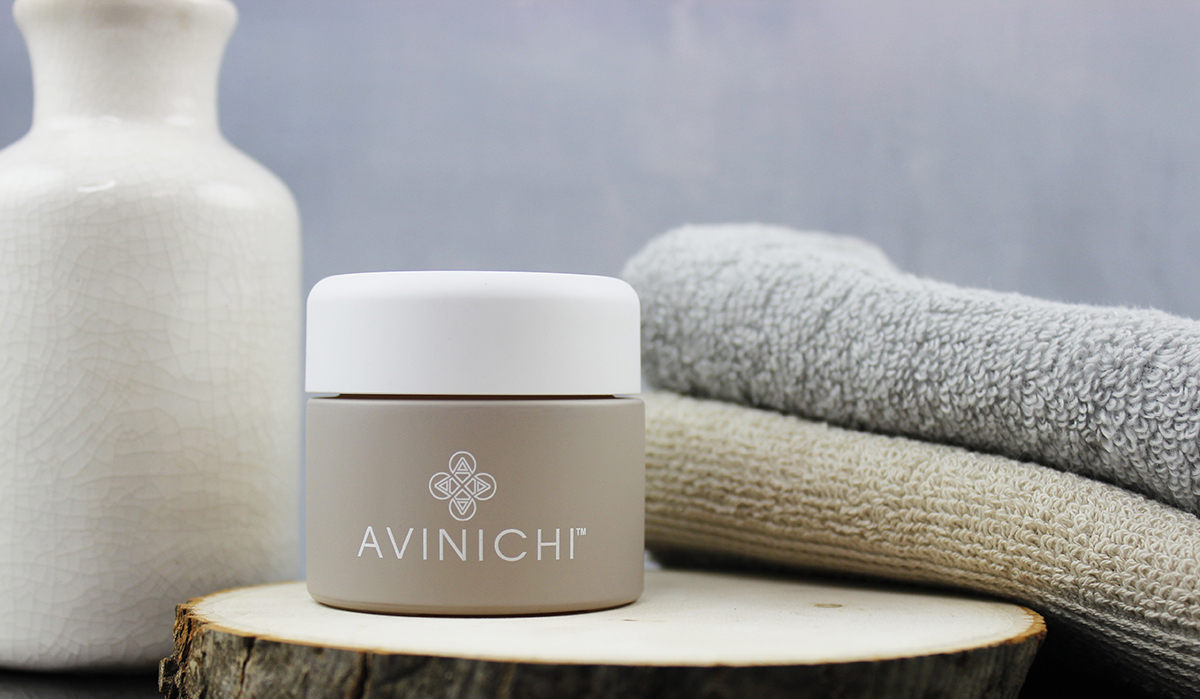Published: December 30, 2022

Exfoliating can be tricky because you need to know the right frequency depending on your skin’s needs. It’s not the same for everyone, but once you figure out what works for your skin, exfoliants can do a lot of wonders!
Today, Avinichi brings you a quick guide to exfoliation and how often you should do it to achieve flawless-looking skin! Our brand specializes in superfood skincare formulas with the best ingredients that mother nature has in store. We have an extensive collection of skincare and body care products that we’d love for you to check out along the way. So, keep your eyes open for some notable mentions!
What Do Exfoliants Do for Your Skin?

Have you ever questioned the necessity of exfoliants? How can you tell that your skin requires exfoliation?
The truth is, your skin actually goes through a natural process of exfoliation every 28 days or so if you’re young. But the process deteriorates as you age because cell turnover is slowed down. Moreover, this process isn’t always flawless even if you’re young.
As a result, there’s a strong chance that you’ll be left with dead skin cells on the surface that end up making you look dull and hyperpigmented. So, treating your skin with exfoliants every now and then can help you make sure your complexion stays clear and fresh.
The reason that dead cells appear darker than the rest of your skin is that they have been exposed to harsh UV rays and all sorts of pollutants over time. So, they appear rougher and darker on your skin.
Exfoliants help keep these dead cells off of your skin. Not only does the process make your skin appear rejuvenated and plump, but it also helps unclog your pores and eases the visible signs of acne breakouts.
And it doesn’t stop there. Let’s talk about a few more of the benefits that exfoliants can offer:
- Eases the appearance of dark spots
- Opens up your pores and enhances the absorption capability of your skincare formulas
- Refines the texture of your complexion, making it look more supple and softer
- Lightens the look of your skin tone
- Curbs the appearance of acne due to how it makes the skin feel less oily
- Makes the skin appear tighter and more lifted
If you don’t exfoliate, you’ll notice that your skin begins to appear drier, patchier, and duller, with an increase in the visible signs of aging. Also, when your pores get clogged, it paves the way for many complications that can compromise the integrity of your skin.
So, it’s evident that you shouldn’t skip exfoliation altogether, but it’s important to be mindful of the frequency.
Types of Exfoliants
Exfoliants come in two forms — chemical and physical. How are these two different? Here’s how each works:
Physical Exfoliants

Physical exfoliants require a mechanical technique to help get rid of dead cells. These formulas are made up of granules and textured components, which, when rubbed against the skin, loosen the hold of dead cells.
Physical exfoliants are typically made of sugar, salt, grounded nuts, bamboo powder, etc. to scrape away dead skin.
These abrasive formulas, also called scrubs, tend to be a little harsh on your skin. So, they’re not suitable for every type of skin.
Chemical Exfoliants

If you aren’t completely on board with abrasive skincare techniques, there is another exfoliant you can choose. Chemical exfoliants or chemical peels are made up of acids and enzymes that act on your skin’s deeper layers. These compounds loosen the bonds that hold dead cells against your skin, helping to remove them.
Chemical exfoliants typically include AHAs, like glycolic or lactic acid, BHAs, like salicylic acid, and enzymes from fruits and vegetables. Although the term chemical peel might have a harsh ring to it, these exfoliants are actually much milder on the skin and don’t often lead to irritation (depending on the potency of acids incorporated).
The Noni Polishing Peel

For the ultimate exfoliation experience, let us introduce you to your new favorite exfoliant — the Noni Polishing Peel.
This lush, multi-tasking formula is enriched with vitamins, plant botanicals, and the superfood noni to pamper your skin. It not only rids your skin of dulling, dead skin cells but also enhances the skin’s natural moisture content.
The lightly-scented formula is infused with safflower seed oil to ease the look of inflammation. The shea butter in the exfoliant boosts the skin’s water content and helps give it a smooth feel. Vitamins A and E work great to fade the visible signs of aging and help strengthen the feel of the skin.
Organic chamomile, green tea, and aloe vera extracts help diminish the appearance of damage on your skin and keep it feeling protected from the harmful effects of oxidative stress. And the star superfood, noni fruit extract, blended in this gentle peel works excellently to give your skin a clarified, youthful appearance.
After cleansing, massage the Noni Polishing Peel over your face and neck. Leave it on for roughly 2-3 minutes and then rinse it off. Experience skin that looks brighter, smoother, and softer after each use.
So, How Often Should You Use Exfoliants on Your Skin?

So, how often should you use exfoliants on your skin? There is no universal answer because it all boils down to your skin type and its particular needs.
Let’s break it down:
Dry & Sensitive Skin
If you have dry and sensitive skin characterized by dry patches, itching, and a coarse texture, you would benefit from chemical exfoliation. Physical exfoliants run the risk of further irritating your skin and leaving it feeling drier. Scrubbing can compromise your skin’s natural moisture barrier and cause increased sensitivity to UV rays and environmental aggressors.
Our Noni Polishing Peel would be a great addition to your routine with its gentle exfoliating formula. It will help alleviate dryness and make your skin appear healthier!
If you’re struggling with dryness and increased sensitivity, we’d like to introduce you to one of our best moisturizers — the Noni Morning Glow. This rich formula is infused with a premium collection of essential vitamins, plant butters, and botanical extracts to restore lost moisture overnight. This night cream is designed to support the feel of the skin while you’re asleep.
It infuses noni fruit extract to freshen up your skin’s appearance and make it look younger. Vitamins A and E in the cream give the skin a natural, healthy glow. Extracts like aloe vera and green tea help ease the look of damage and dark spots on your skin. And shea butter works to fade visible signs of inflammation while replenishing the skin’s natural moisture content.
Wake up to a rejuvenated, plump, and perky look after every use!

Oily and Acne-Prone Skin
Oily skin can benefit from both chemical and physical exfoliants. In the case of scrubs, exfoliate two to three times a week to reduce the look of grease. Choose a formula with jojoba beads or bamboo powder to effectively rid your skin of dead cells without causing damage to your skin’s protective barrier.
Even if your skin is oily and thick, abrasive techniques like physical exfoliation should be executed mindfully. Too much scrubbing can actually be counter-productive and cause the oil glands to work overtime.
You can also opt for chemical exfoliation with comparatively stronger formulas. These formulas work on the deeper levels of your skin and can help inhibit sebum production. Choose BHA exfoliants as they are oil-soluble, making them better for dealing with oily-looking skin.
When working with oily skin, cleansing is just as important as exfoliating. Avinichi has one of the best cleansers to help you ease the visible signs of oily skin and give it a fresh glow. Our Noni Mousse Cleanser serves as the perfect start to every skincare routine, especially when you have oily skin.
It’s formulated with propanediol, moringa oil, and argan oil, which help regulate how greasy the skin looks while adding in moisture. Citric acid also works well to rid the skin of impurities and excess oils, leaving it looking clean and clarified. Lavender and chamomile extracts in the formula help ease the look of blemishes and fade the visible signs of breakouts.
Use this lush cleanser every day to remove dirt, makeup, and other impurities from the skin. You should also use it before exfoliating.

Combination Skin
Combination skin is a little tricky to deal with because you’re literally working with two types of skin. So, it’s recommended to treat it as such — you can use both chemical and physical exfoliants but not on the same day.
If your skin is more on the oily side, choose physical exfoliants more often than chemical ones. Stick with BHAs on your chemical exfoliation days.
But if your skin is more on the dry side, you should exfoliate with AHA-based chemical peels more often than using physical exfoliants. Keep it limited to twice a week.
Mature Skin
Mature skin usually refers to dry skin that’s displaying the visible signs of aging, including loss of firmness, wrinkles, and discoloration. It also means that your skin’s natural exfoliation process isn’t as effective anymore.
So, it’s best to treat your skin to mild chemical exfoliants twice a week. An AHA, like glycolic acid, would be a great choice as it helps make your skin appear younger as well!
Tips to Get it Right When Exfoliating

Want to make the most of every exfoliation session? Here are a few tips to keep in mind:
Follow a Proper Routine
Always start with clean skin before moving on to exfoliation.
Keep in mind that physical exfoliants require your skin to be damp while some chemical exfoliants don’t. Follow the instructions mentioned on your exfoliant’s packaging to get the method right.
For manual exfoliation, be mindful of the pressure you apply as too much can lead to damage and many other skin complications. Massage your skin with the formula for 20 to 30 seconds per area in gentle circular motions. Then, rinse with lukewarm water. Follow up with a good moisturizer to keep your skin feeling protected.
Pick a Suitable Time of Day
Should you exfoliate in the morning or at night? What’s the difference? Each has its list of pros and cons.
Exfoliating in the morning helps to get rid of dead cells that your skin produces overnight as a result of its natural renewal processes. Moreover, the oils produced during this time will make it easy to remove impurities and dead cells. But you can’t step outside in the sun immediately afterward since your skin is fully exposed and vulnerable post-exfoliation.
In comparison, exfoliating at night will give your skin plenty of time to heal during sleep. It’ll also make your nighttime products work more effectively and thus aid in giving your skin a rejuvenated appearance.
So, pick whichever time suits your skin best!
Make the Most of Exfoliants with Avinichi
So, the matter of how often to exfoliate depends heavily on your skin type and the type of exfoliant used. Be sure to get to know your skin before you try anything new with it.
In the meantime, if you’re interested in browsing more superfood skincare products, be sure to check out our bestsellers here!
